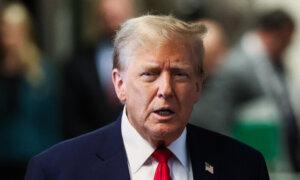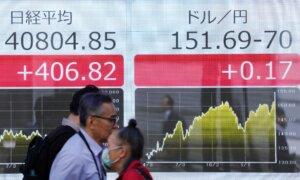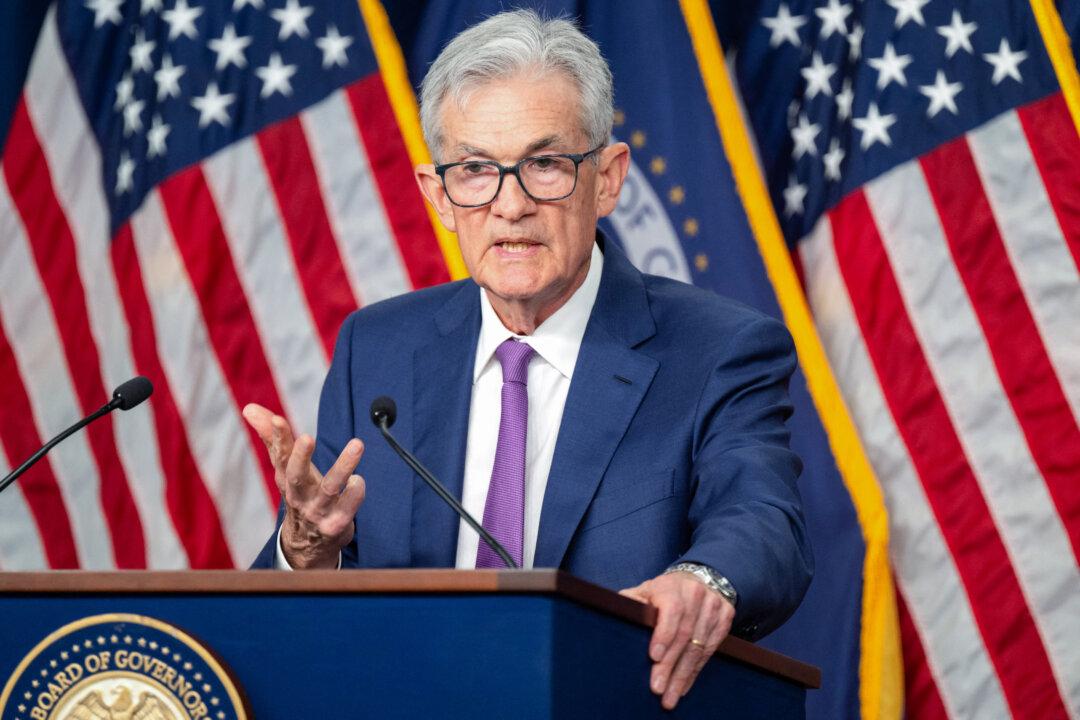As the U.S. dollar reached a 34-year high against the Japanese yen on April 22, former President Donald Trump took to Truth Social to warn about the greenback’s strength against various Asian currencies.
Since the COVID-19 pandemic, the U.S. dollar has been one of the strongest currencies globally as its rivals have weakened. However, while this might appear to be a positive economic development on the surface, the presumptive Republican presidential nominee has described it as a “disaster.”
Writing on his social media platform, President Trump explained that he discouraged China and Japan from deflating their currencies to boost exports.
He added that he imposed limits on Tokyo and Beijing, and if they breached those conditions, “there was hell to pay.”
“Biden has let it go,” the former president stated. “Watch them now pick apart the U.S. It will be an open field day. Don’t let this happen Crooked Joe. Wake up and smell the roses!”
To kick off the trading week, the U.S. dollar recorded a 34-year high of 154.85 yen. Against the yen, the dollar has risen by nearly 10 percent year to date. Over the past 12 months, the greenback has rocketed by close to 16 percent.
Overall, the U.S. dollar index, a gauge of the greenback against a basket of currencies, has surged by more than 4 percent since the start of 2024.
This year, the U.S. dollar has strengthened on expectations that the Federal Reserve will keep interest rates higher for longer following four hotter-than-expected consumer price index reports. A chorus of central bank policymakers has noted little urgency to cut interest rates amid solid economic data. This has lifted Treasury yields and, in effect, supported the dollar.
In Tokyo, the Bank of Japan has acknowledged the yen’s concerning fundamentals. Despite the first rate hike since 2007 and optimistic outlooks for the world’s fourth-largest economy, the yen has failed to capitalize on these developments.
A weaker yen is a positive for Japanese exporters and tourists visiting Japan, but it affects businesses and consumers by raising import costs.
Economists have sounded the alarm that there could be a ripple effect for the United States because American exports to Japan become more expensive. Many believe that U.S. energy, such as liquefied natural gas, will not be affected. However, agricultural products, such as beef, pork, and fruits, could suffer in the U.S.–Japan trade relationship.
Japan is not the only one to bear the brunt of a stronger dollar.
A strengthening U.S. dollar will essentially depreciate other currencies, making trade costlier. Additionally, experts assert that nations with dollar-denominated debt are less creditworthy.

Prospects of Intervention
The United States, Japan, and South Korea recently hosted a trilateral ministerial meeting, with officials expressing “serious concern” surrounding “the recent sharp depreciation” of the yen and the Korean won.South Korea’s currency has also slumped by roughly 6 percent year to date against the dollar.
Treasury Secretary Janet Yellen and her counterparts agreed that they would “consult closely on foreign exchange market developments in line with ... existing G20 commitments” while “acknowledging” what is happening in Japan and South Korea. This statement suggests that Washington could be giving the green light for government or central bank intervention to prop up their currencies, say ING strategists.
Japanese Finance Minister Shunichi Suzuki told lawmakers that the meeting laid the groundwork for Tokyo to “take appropriate action.” However, he stopped short of outlining what these measures could be.
Without a clear indication that the Bank of Japan will intervene, the USD/JPY currency pair’s trajectory will likely stay the course, according to Ipek Ozkardeskaya, a senior analyst at Swissquote Bank.
“The yen bears are cautiously pushing the USDJPY toward the 155 psychological resistance to see if that level would trigger a response from the Japanese authorities, which eventually won’t matter beyond clearing the short-term bears,” she said in a research note. ”In the absence of a hawkish stance from the Bank of Japan (BoJ), the USDJPY will likely continue its upside trajectory.”
The last time officials intervened in the forex market to prop up the yen was in 2022.
America First and US Exports
The U.S. is enduring above-trend inflation, with the consumer price index rising to 3.5 percent in March. A stronger dollar can help ease price pressures because of cheaper imports.At the same time, administrations have attempted to boost exports over the years, which requires a depreciated dollar. Ultimately, it is a balancing act for public policymakers.
President Trump and many of his closest economic advisers have advocated a weak-dollar policy.
“Our companies can’t compete with them now because our currency is too strong. And it’s killing us,” he said.
“China and Europe playing big currency manipulation game and pumping money into their system in order to compete with USA. We should MATCH, or continue being the dummies who sit back and politely watch as other countries continue to play their games—as they have for many years!” President Trump wrote.
Weeks later, White House officials, including then-Treasury Secretary Steven Mnuchin and the then-National Economic Council Director Larry Kudlow quickly abandoned the proposal.
“I do believe in a strong dollar, which signifies a strong U.S. economy, a strong stock market, and particularly, because of the president’s economic policies, we have growth in the U.S. that has outpaced everywhere else,” Mr. Mnuchin said.







